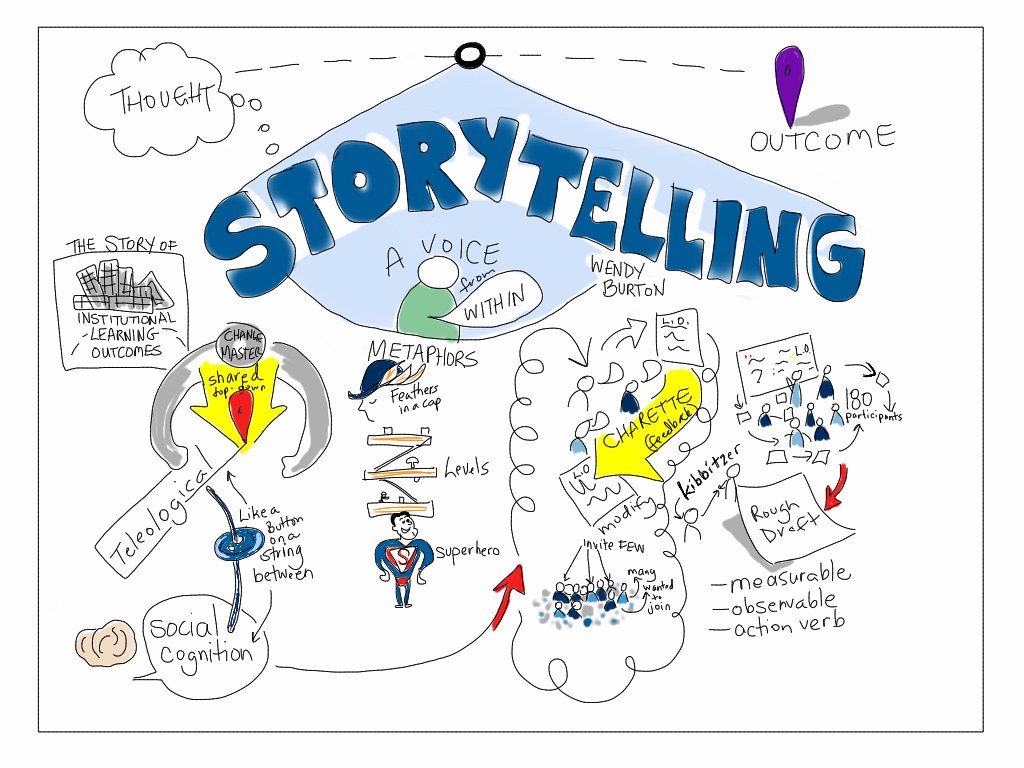Qualitative research is an excellent choice if you are searching for an open-ended, flexible exploration of participants’ opinions, experiences, and descriptions. This flexibility is extremely important when you have chosen research on topics that have not been widely studied, as it gives the researcher the freedom to explore new or unexpected perspectives with participants as these emerge.
Qualitative research and analysis are descriptive and exploratory: using such methods means you will be asking open-ended, exploratory questions that can serve to more fully develop the subject matter from a subjective perspective. Such qualitative research is also contextual, meaning that you are able to study your topic and your participants holistically, from within their natural contexts rather than isolating them to study them outside of that context (Corbin, Strauss, & Strauss, 2014).
For example, maybe you want to research how nurses practice self-care and avoid burn-out. Rather than giving them a survey with a list of pre-chosen self-care options, you may choose to conduct qualitative research in order to hear the ways in which nurses themselves describe their self-care practices, and how they understand such practices in helping avoid occupational burn-out. Then, you can choose a form of qualitative analysis to best understand that rich data you obtained.
Before we jump more deeply into qualitative analysis methods, however, it’s important to remember that such analysis is always done by a person. Our dissertation consulting clients often mistakenly believe that qualitative analysis software completes the analysis much as statistical analysis software (e.g., SPSS, R) does. However, while analysis software such as NVivo helps you in storing, searching, and organizing your information, the actual analysis necessitates human judgment and reasoning.
The Importance of Alignment
When you hear the dreaded word, alignment, you may not know what your dissertation chair or committee is referring to. But alignment – or the lack of alignment – is one of the most common reasons a dissertation proposal fails and why you may seek dissertation help. Alignment is the logic-based progression of ideas connected to the structural features of your dissertation.
In your overall dissertation, this will start with how your introduction is connected to your problem statement. Your problem statement then informs your purpose statement, which in turn lays the foundation for your research questions. This need for alignment continues with the method you have chosen – which should be the best method to answer your research question – and with the type of qualitative analysis you choose to conduct.
Different research designs have different aims, and therefore necessitate a different type of analysis. For instance, if the purpose of your dissertation or thesis writing project is to explore how employees at Company X have experienced organizational justice and how such experiences shape their understanding of job satisfaction, you will want to use a qualitative analysis design like thematic analysis.
This is because thematic analysis will allow you to find the common themes and topics between participants as it applies to different types of experiences, perceptions of organizational justice, and job satisfaction. If, on the other hand, the purpose of your study is to understand how women who have recently been released from prison re-enter their family structures, you may instead choose narrative analysis, which allows this traditionally marginalized population to produce accounts about themselves, as well as constructs meaning(s) about how these women see themselves and the world around them.
What is Bracketing?
One of the challenges in conducting qualitative analysis is the potential for personal bias. Such biases may not – and often are not – conscious or intentional. However, as researchers we all have our own set of knowledge, experiences, and emotions that formulate into preconceptions about individuals, events, or specific phenomena. And, given that qualitative research and analysis is inherently subjective – one of the unique and important aspects of this type of method – researchers must be careful to acknowledge and put aside any such preconceptions so as to not adversely affect the trustworthiness of the findings This is where bracketing comes in.
Bracketing is a way to enhance the rigor of qualitative research and analysis in order to validate the data collection and analysis process (Peters & Halcomb, 2015). Bracketing is the process by which the researchers suspends preconceptions, expectations, assumptions, and personal bias about the research to aid in mitigating the potentially harmful impact that the researcher’s preconceptions could have on the research process.
There are a number of different ways that researchers can use bracketing: memo writing during the data collection process can allow for self-reflexivity and the identification of personal biases; coding and recoding, with a week in between such sessions, can help the researcher by comparing the coding sessions and determining if biases occurred; and interviews with outside sources can also serve as a mediating force. However, it is important to remember that it is not possible to completely eliminate the researcher’s perceptions; what bracketing helps accomplish is to bring to light those assumptions that could impact the findings of a qualitative analysis, and thus its trustworthiness as a study.
Types of Qualitative Analysis
As explained previously, it is important to establish alignment throughout your study, and this extends through your choice of qualitative analysis approach. There are a variety of qualitative analysis approaches, and you will need to select an approach that meshes well with your study’s research design and overall aims. Below are descriptions of the types of qualitative analysis that are most commonly used by our dissertation consulting clients: thematic analysis, modified van Kaam analysis, narrative analysis, content analysis, and constant comparative analysis.
Thematic Analysis
Thematic analysis can be used for any form of qualitative research but is most often the choice of researchers using a case study or phenomenological research design. The method’s flexibility means that not only does it have wide applicability across designs but also that it is one of the most popular forms of analysis for those conducting qualitative analysis.
Thematic analysis is the process by which patterns – also called themes – are identified in qualitative research. Perhaps more importantly, these themes should answer the research questions posed and say something significant about an issue or idea. Thematic analysis, however, does not just summarize your data – it interprets the meanings embedded in the data and helps make sense of those meanings. In order to reach this level of interpretation, a dissertation coach may recommend using Braun and Clarke’s (2006) six-step thematic analysis method:
Step 1: Become familiar with the data. In this step, the researcher should read, then re-read, the interview transcripts, allowing them to become extremely familiar with the entirety of your data set. Journaling or note-taking will help you to organize and document your thoughts during this first step. Your data set may include more than just your interviews; often, in order to triangulate your data – particularly if you are using a case study method for your dissertation – data will also include additional documents. All of your data should be read, re-read, and the subsequent steps of thematic analysis applied.
Step 2: Generate initial codes. In step two, the researcher will organize the data in a systematic and meaningful way, through the use of coding. Coding condenses the data into smaller, more manageable chunks of meaning. This is a lower-level categorization, and often includes a phrase or word as a way to label your transcript text. Codes, however, are different from themes, which will be discussed in the next step.
Step 3: Search for themes. Themes are higher-level categories of meaning-making, typically used to identify major elements of your qualitative analysis. These themes should answer your research question; that is, as Braun and Clarke (2006) argue, themes are defined by their significance to your study. Although there may be overlap between your initial codes and your themes, particularly if your dissertation involves use of a small data set, themes should be a more holistic, significant categorization.
Step 4: Review themes. Step Four involves reviewing, and possibly altering, themes from Step Three. Such editing involves querying your initial themes and seeing if they make sense, and if the data supports the theme. You also want to make sure that you are not trying to fit too much into one theme, and check for any overlapping themes that can be merged together.
Step 5: Define themes. In this step you refine the final themes by trying to identify the essence of each theme – what each is trying to say, and the ways in which themes relate to one another and the overall research question(s).
Step 6: Write-up. The final step is writing up this thematic analysis, often as a chapter in your dissertation or thesis writing project.
Modified van Kaam Analysis
Phenomenology as a form of qualitative research seeks to characterize the phenomenon under study by examining the accounts of those who have experienced it, then comparing and contrasting their accounts so as to identify the essence of what is shared between them, thus defining the phenomenon (Moustakas, 1994).
Given this methodology, the Modified van Kaam approach, popularized by Moustakas (1994) is the most used form of data analysis, in large part because of the significant amount of data that is need for this analysis. There are seven steps to the modified van Kaam analysis: (1) listing and grouping, (2) reduction and elimination, (3) clustering and thematizing, (4) validation, (5) individual textual description, (6) individual structural description, and (7) textural-structural description.
The first step in the data analysis plan is to refrain from judging whether anything exists (epoche). This step consists of careful phenomenological bracketing, as discussed in the previous section. In addition, researchers engage with the verbatim transcription of the recorded data by coding and organizing the data. In the second step, the data is reduced to complex units of meaning. These units of meaning of invariant horizons represent the building blocks for the qualitative analysis. In the fourth stage, validation requires checking the central themes against the entirety of the transcript to see if the themes align, and if they do not, eliminating them.
In step five, the researcher builds individual textural descriptions for each participant using the validated themes, and the sixth step involves constructing structural descriptions of participants’ overall experiences, using the aforementioned textual description. In the sixth stage, steps two through five are repeated for each participant until saturation is achieved, and the seventh stage represents the combination of the participants’ perspectives. This characterizes the phenomenon through collective description as well as the comparison of the different essential pictures of what it represents.
Narrative Analysis
Narrative analysis is a qualitative analysis method that is used when the stories of participants are crucial to answering your research question(s) and is comprised of analytic frames constructed by researchers who interpret participant stories. In this kind of qualitative analysis, it is not only participants’ experiences and perceptions of those experiences, as is the case with phenomenology, but instead the stories themselves.
In addition, while a thematic analysis often asks what, narrative analysis asks why and how. While narrative analysis of course includes the content of those stories, it also contains an interpretation of the form and the meanings of that form and content: how the stories are constructed, what the functions are of telling those stories to the individual, and how the story is told by the participant. As such, this application of qualitative research and analysis allows researchers to better understand the ways in which individuals represent themselves and their experiences.
Polkinghorne (1995) described two ways of conducting narrative analysis: narrative analysis procedures construct individual participant’s stories, whereas paradigmatic analysis of narratives employs the use of inductive and deductive reasoning to find themes – either complementary or contrasting – between individual stories. The first analysis looks at the ways in which individual stories act as explanatory, and paradigmatic analysis uses those individual stories to construct taxonomies.
An example of a narrative qualitative analysis could be exploring the stories of fathers of adopted children to understand the ways in which they feel their childhood impacted how they parent. This could then be presented by individual participant father, allowing them agency in constructing their own narrative, or by themes across all participant fathers.
Content Analysis
Content analysis is a unique methodology insofar as it can be used for both quantitative and qualitive research and analysis. However, within qualitative analysis, content analysis can be used to directly examine communication, particularly by using text. In this way, content analysis helps the researcher determine the presence – and often frequency – of certain words, themes, and concepts, within a specific qualitative setting.
This text could include interviews that the researcher has conducted, but also apply to a larger definition of text including books, newspaper articles and/or headlines, music lyrics, speeches, historical documents, or other media. If you’re using content analysis, you may even be using multiple forms of text; for example, if you want to see how the idea of “deviance” was constructed in relation to marijuana use in the 1960s, you may use newspaper articles, psychology manuals, television announcements/advertisements, and speeches from politicians.
To analyze the text(s), researchers will begin the qualitative analysis process by coding the text into specific code categories. This allows them to analyze the meaning(s) of these words and themes, and make inferences about the messages being constructed within these texts, the audience of and for the text, the writer(s) of the text, and the larger social and cultural context around the text.
There are two overall types of content analysis. The first, conceptual analysis, examines the existence and frequency of ideas and/or concepts in a text. The second is relational analysis, which is the second step of conceptual analysis; in this form of analysis, the researcher examines and interprets the relationships among the words, concepts, or ideas in a text.
Both conceptual and relationship content analysis may be done using either manifest or latent content. Manifest content is seen as the more objective content and is defined as text or concepts that are directly seen and understood, like words that are specifically spoken/read in a speech. Latent content, on the other hand, is much more subjective application of qualitative analysis and involves the implicit content of the text, wherein the researcher has to undercover the underlying meaning of the text.
Latent content analysis may mean interpreting an interview or unpacking the use of linguistic “dog whistles,” which necessitates a cultural and historical understanding of the text(s). Both of these forms of content can be useful for a content analysis, and researchers often include both to provide a more nuanced and holistic representation of the central phenomenon.
Moreover, both of these forms of content analysis can include either inductive or deductive reasoning. Inductive reasoning includes an interpretation of content by fusing the new information together into theories, while deductive reasoning looks for meanings already predetermined – perhaps by an already-in use theory or specific historical or political conditions. That is, inductive reasoning allows researchers to start with a blank slate and build upwards, while deductive reasoning starts with a meaning and applies to the data, analyzing in a funnel from top-to-bottom.
Within either form of reasoning, Elo and Kyngäs (2008), suggest two main steps in content analysis: (1) preparation: immersing oneself in the data and gaining a holistic sense of the text, as well as choosing the unit of analysis (word, phrase, concept) and deciding on using manifest or latent content; and (2) organizing: open coding the text and creating categories, including grouping codes in higher order headings, and deciding to use either deductive or inductive reasoning.
Constant Comparative Analysis
Constant comparative analysis is primarily the qualitative analysis design for grounded theory studies. Since the objective of the grounded theory approach is to produce theories of how some social element works, the constant comparative method helps analyze data in order to develop such theories by simultaneously coding and analyzing data. Combining systematic data collection, coding, and analysis, along with theoretical sampling, the constant comparative method generates theory that is close to, and integrated with, the data.
Glaser and Strauss (1967) provided four steps for the constant comparative method: “(1) comparing incidents applicable to each category, (2) integrating categories and their properties, (3) delimiting the theory, and (4) writing the theory>” (p. 105). Using these four stages, the researcher is able to continuously go through the data collection and analyze and code the data collected, which will reinforce theory generation through the process of theoretical sampling. This method starts with the raw data and through constant comparison, arrives at a substantive theory.
Conclusion
It can be overwhelming to decide which method of qualitative analysis is best for your research project. That is why getting dissertation assistance or a dissertation coach can be a great idea. They can help you determine which method best fits the purpose and research questions of your study, and how to best answer the questions your study is posing. Each qualitative analysis method has its own unique strengths, as well as possible challenges. It is important to pick the one that will help you not only make sense of and interpret your data, but also that gets your dissertation or thesis through the approval of your committee. Happy analyzing!
References
- Braun, V., & Clarke, V. (2006). Using thematic analysis in psychology. Qualitative Research in Psychology, 3(2), 77-101. doi:10.1191/1478088706qp063oa
- Corbin, J., Strauss, A., & Strauss, A. L. (2014). Basics of qualitative research. Thousand Oaks, CA: Sage.
- Elo, S., & Kyngäs, H. (2008). The qualitative content analysis process. Journal of Advanced Nursing, 62(1), 107-115. doi:10.1111/j.1365-2648.2007.04569.x
- Glaser, B. G., & Strauss, A. L. (1967). The discovery of grounded theory: Strategies for qualitative research. Hawthorne, NY: Aldine.
- Peters, K., & Halcomb, E. (2015). Interviews in qualitative research. Nurse Researcher, 22(4), 6-7. doi:10.7748/nr.22.4.6.s2
- Polkinghorne, D. E. (1995). Narrative configuration in qualitative analysis. International Journal of Qualitative Studies in Education, 8(1), 5-23. doi:10.1080/0951839950080103








